





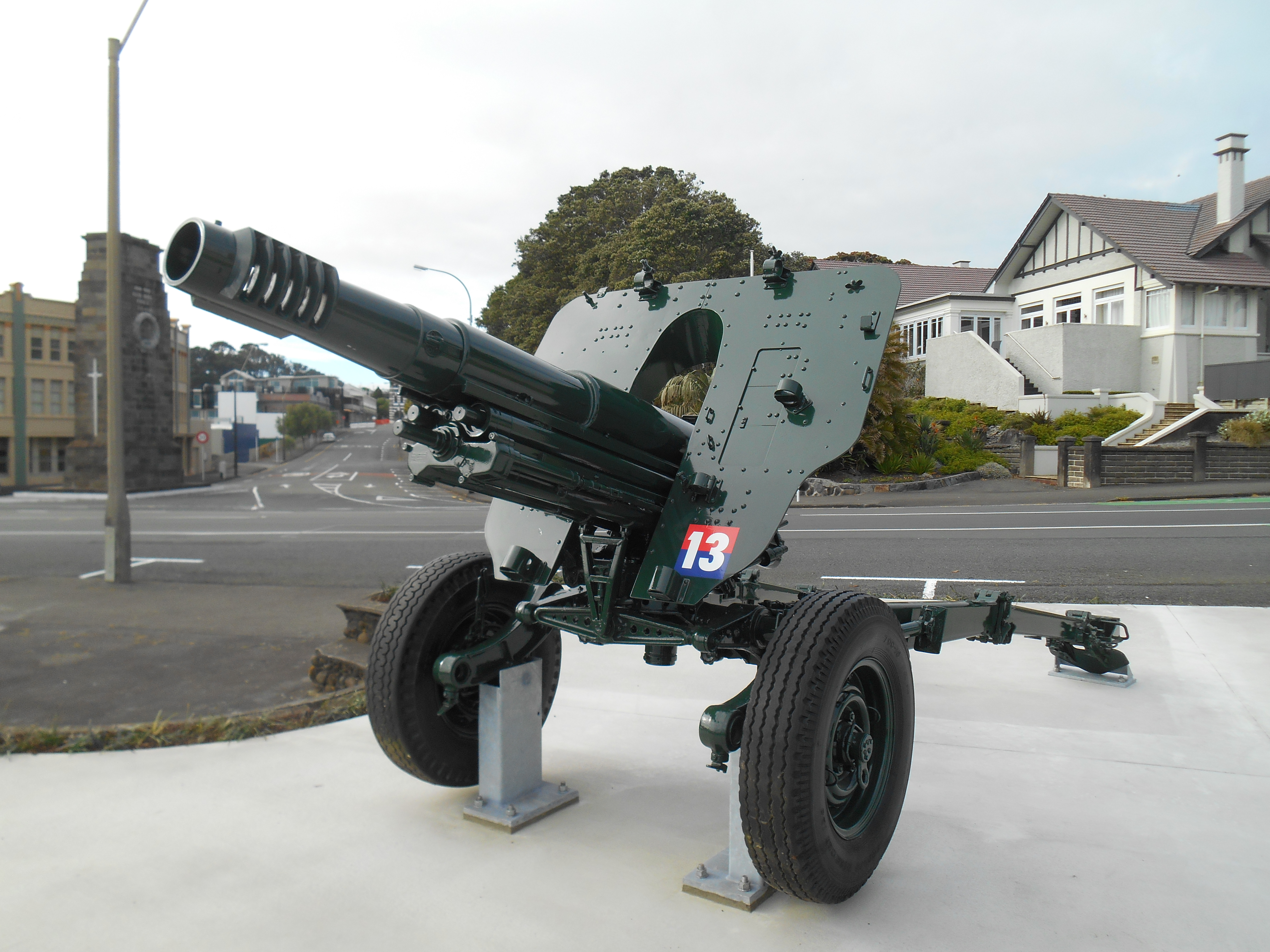
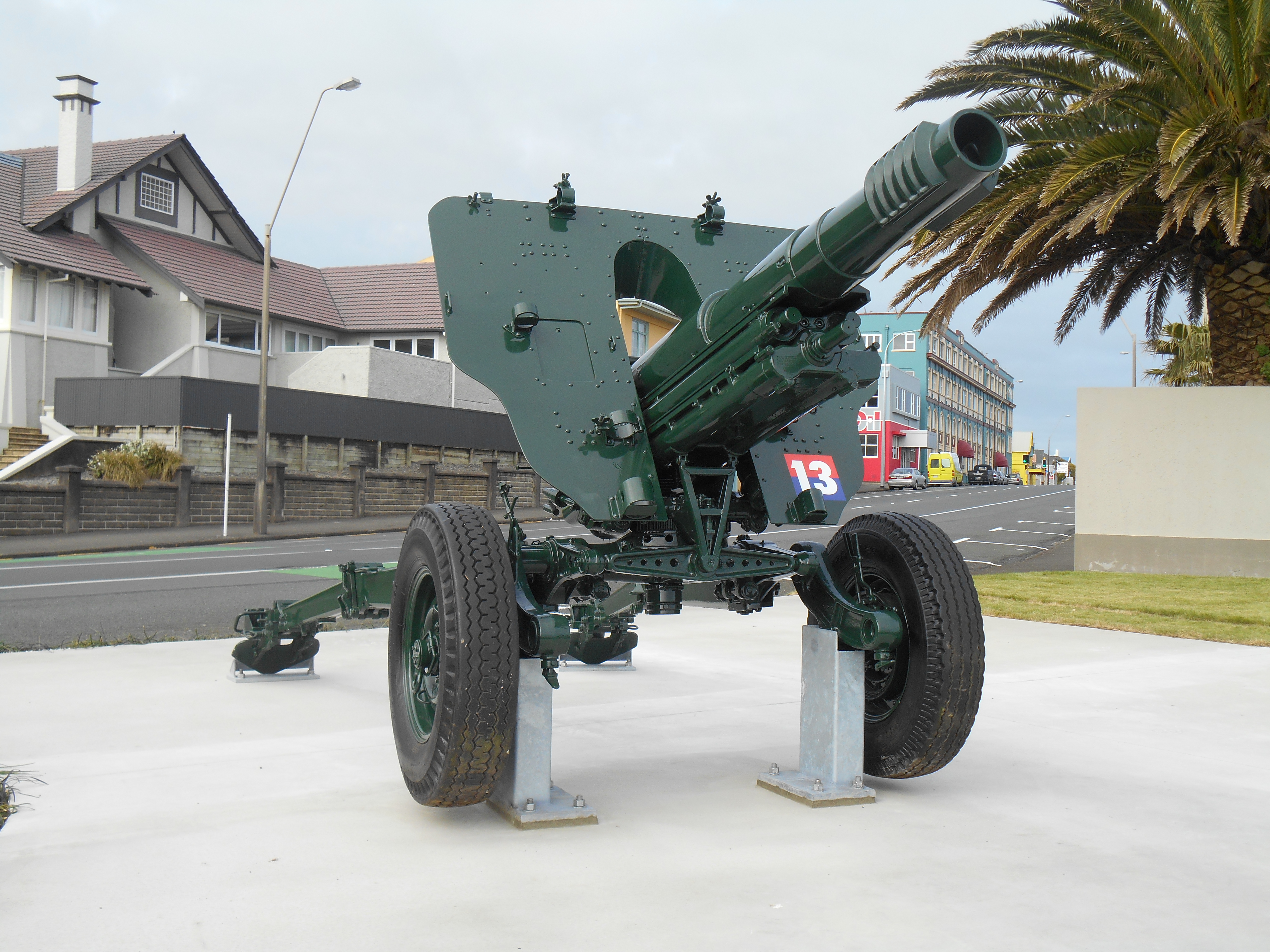
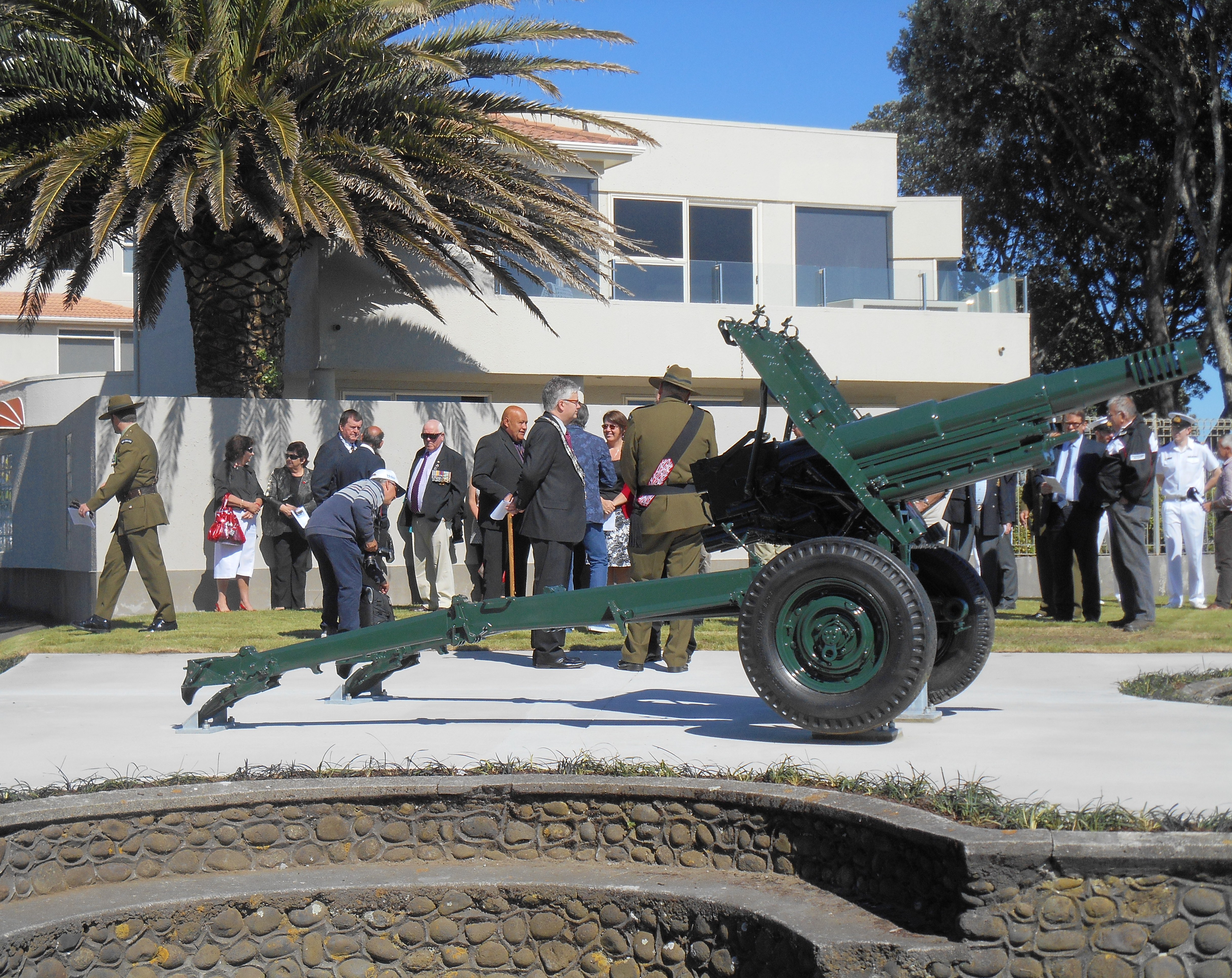

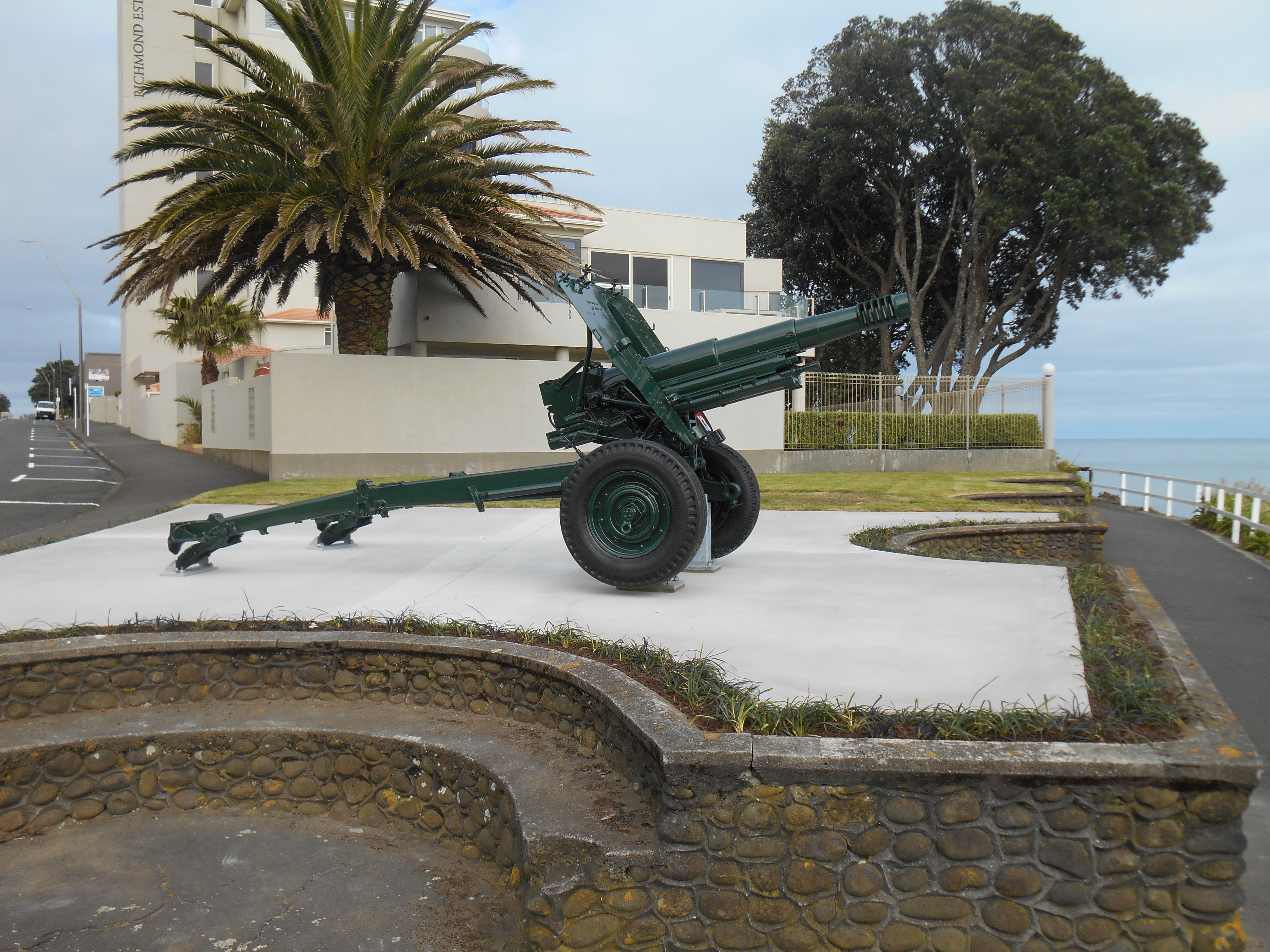
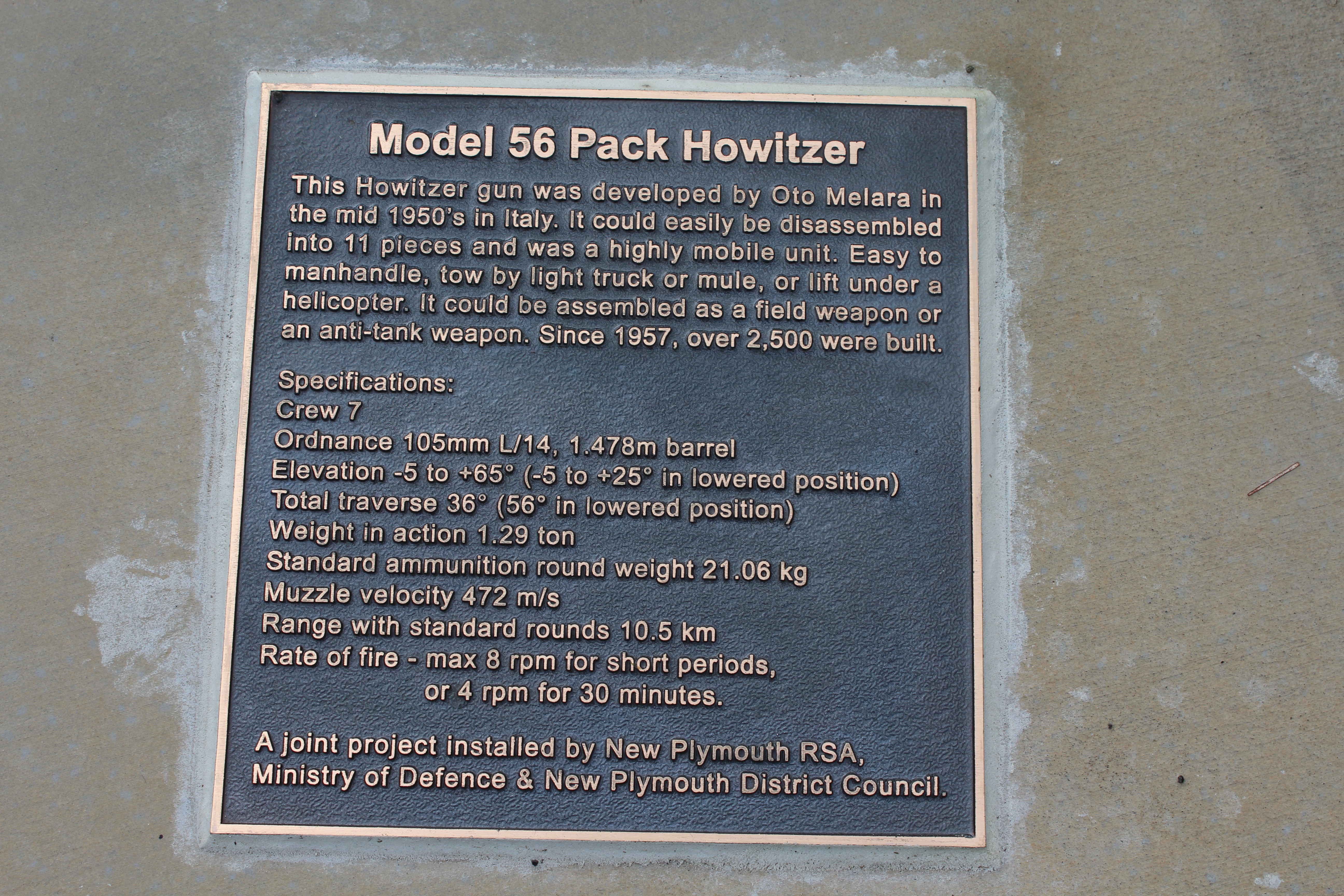
This L5 105mm Pack Howitzer was dedicated on its site opposite the New Plymouth Cenotaph on 7 November 2015. Please use this link to see the service sheet.
The L5 Pack Howitzer was designed and
built in Italy by OTO Mellara and was originally known as the Model 56.
Specifications for the design stated the requirement for it to be fully
transportable throughout the mountainous regions of Italy and Europe. Hence the
pneumatic tyres for high speed towing and the ability for it to be dismantled
into 112 sections for transport across rough terrain. In fact it was on
occasions, in its very early life, broken down and carried on horseback. It was
to be light enough, fully assembled, to be air portable and able to be air
dropped. The weapon was, in fact, light enough to be carried slung underneath
the Bell UH1 Iroquois helicopter.
Original production began in 1957 and
was soon adopted by many countries throughout the world. Production ceased in
1984 with some 4200 weapons delivered. The weapon has seen action in many
combat areas, including by the British in South Yeman and Borneo, and New
Zealand in South Vietnam. Argentina used the weapon in the 1982 Falklands
campaign.
The L5 has a very short barrel with a
multi baffle muzzle brake, a hydraulic buffer and helical recuperator and a
vertical sliding wedge breech block. One of the more unusual features of the
weapon is the configuration of the wheels and axles. The wheels can be fitted
in two positions, the normal field position with the wheels overslung giving an
elevation of +65° and a depression of -5° plus a total traverse of 36° (18°
left and right). With the wheels underslung the weapon assumed an anti tank
role, giving an elevation of +25° and a depression of -5°. The main advantage
of this configuration was the overall height of the weapon reduced from 2m to
just under 1.5m, making it much easier to conceal.
The weapon's normal crew was seven men
and was towable by a long wheelbase Landrover. An advantage of the L5 was that
it fired the same 105mm ammunition as the American M101 and M102 field guns.
This type of ammunition was manufactured world-wide and included High Explosive
(HE), smoke, illumination and High Explosive Anti Tank (HEAT). A modification
developed during the Vietnam conflict was the Flechette round, designed for
local defence, in which a round fired at close range exploded shortly after
leaving the barrel, sending out thousands of 2" finned steel darts. The
maximum range, at full charge, was 10575m or 11565 yards.
New Zealand purchased 24 L5s in the early 1960s, 4 of which were deployed to South Vietnam in July 1965.
Eighty-nine Gunners and about two dozen support personnel, who formed 161 Bty RNZA, were attached to
the US 173rd Airborne Brigade. 161 Bty RNZA saw its first action with a fire support mission on 19 July 1965.
On 8 February 1967 the weapon was replaced with US M2A2 weapons.
Kevin Forde
December 1998
From: New Zealand's Artillery History
Please do not reproduce these images without permission from Puke Ariki.
Contact us for more information or you can order images online here.